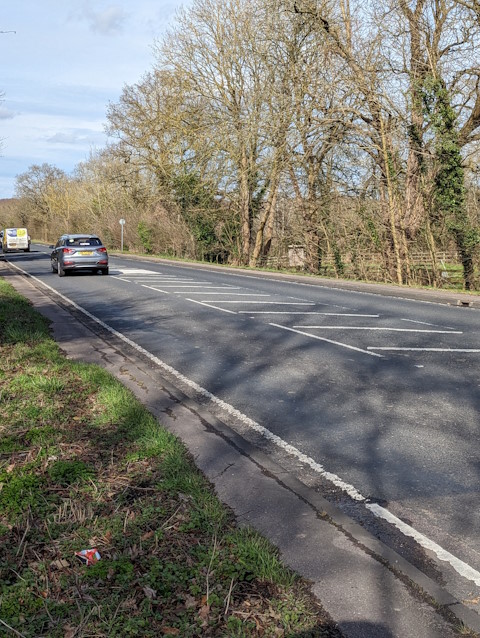
EFTAG learnt last year that Essex Highways are planning changes to the Epping New Road (A104) between Woodford and the Wake Arms roundabout.
This road has long been an embarassment to the county, as well as a safety hazard (there was at least one death last year). Cyclists coming north from London receive a rude “welcome to Essex”, with the narrow, overgrown cycle lanes and paths telling you everything you need to know about historic attitudes to active travel.
You can read more about the proposals on the City of London’s web site (PDF). The City have been consulted because they are the conservators of Epping Forest, and we had a chance to contribute to their response. Essex Highways and the County Council have not themselves published their plans at all, but we know that the £1m+ funding is coming from central government.
Balancing the needs of walkers, cyclists and horseriders crossing this busy road with the needs of road users, which includes cyclists heading out to Epping and classic cycling country beyond, is not easy.
We welcome proposals for speed cameras and lower speed limits.
But the plans also include narrowing lanes with a central hashed area, and the introduction of traffic islands at crossings. The road layout they’re proposing looks much worse for cyclists using the road, and does’t meet important government guidance in a number of areas.
Overall, we think this scheme is likely to decrease safety and increase the risk of accidents.
Central hatching discourages drivers from giving enough space to cyclists they are overtaking. It will create conflict with vulnerable road users across the entire length of the road, not just at each crossing point.
There’s no evidence this layout decreases speeds substantially. We do expect speed reductions, but that will come from the speed cameras and the new 30mph speed limit. If anything, central hatch markings can increase speeds rather than reduce them, because more separation from oncoming traffic gives an increased feeling of safety to motorists.
With these drawbacks, it should be no surprise that narrow lanes like this are specifically rejected by the Government’s guidance to local authorities (LTN 1/20).
And we’re concerned that the traffic islands themselves aren’t even going to make crossing the road much easier. They are likely to be too narrow for horses to use, and even if a bike fits (just), riders have to have complete control in order to wait on the island. This is particularly dangerous for kids – those family excursions without the car that everyone wants to encourage! Small traffic islands work fine in towns (for pedestrians), but they won’t work well in the Forest.

We’ve prepared a slide deck for councillors and council officers, to suggest some different ideas for this road. It’s not that we’re against change – the existing cycle lanes are dangerous and have to go.
But it looks like the Government are about to spend over a million pounds on a scheme that breaks their own guidelines and will put people off cycling.
That’s pretty disappointing for all of us that want to see more people choosing to use their bikes to access the Forest (and the rest of the district). It should be disappointing for anyone that wants to see less congestion on our roads. Now it’s up to our councillors to insist on better.
I am shocked that the needs of another group of vulnerable road users, namely powered two wheelers, have been completely ignored. Many users of such vehicles use them to commute into London, thus saving congestion and pollution. Weekend recreational users bring positive benefits to the area. The proposed changes must not make the roads and street configuration even more dangerous for this sizeable group of vulnerable road users.
Currently motorbikes are one of the very reasons this road is as dangerous as it is. The young woman who was killed last year on the road, was struck by a motorcyclist going at least double the limit. This is why average speed cameras are being implemented on this road. Also there is a “culture” of motorcyclists arriving/leaving at the Original Tea Hut (aka The Bikers’ Hut) and riding at ridiculous speeds down Epping New Road like it’s a drag race. I’m not saying you are apart of this problem however any person who visits the forest regularly would be able to attest to the fact that there is a sizeable majority of motorcyclists engaging in this reckless behaviour.